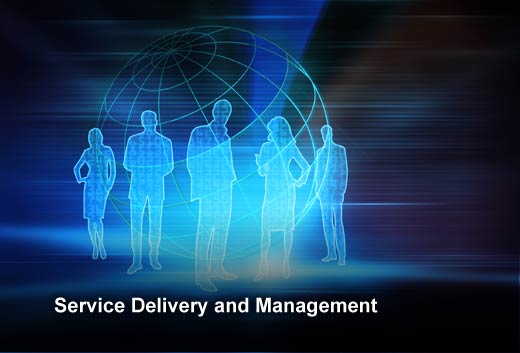Building business capability allows your organization to move beyond heroic effort and isolated success to repeatable performance and continuous improvement. Understanding the most salient capabilities to an organization enables businesses of every size, in every industry, to elevate performance and align tactical execution with strategic goals.
CMMI® Institute models have helped thousands of organizations by providing roadmaps for understanding, developing, and confirming the capabilities necessary to reach key strategic goals. The company recently released the “Top 8 Capabilities to Strengthen Your Business in 2015,” a list of the top capability areas that make up a proven framework for organizations to quickly understand how well their business is doing in the capabilities that matter most to them.
A Framework for Business Success
Click through for the top eight capabilities that can strengthen your business and frame success for 2015, as identified by CMMI® Institute.
Product Engineering and Development
Technology is transforming consumer demands at a rapid clip — and product development cycles are racing to keep up. For example, Gartner predicts the Internet of Things will create $1.9 trillion in economic value-add by 2020. That has industries scrambling to update their product lines to capture their piece of the pie.
When product development processes are ambiguous, developers, engineers and managers rely on assumptions and guesswork to get the job done. Without a clear product development strategy, there’s no guarantee that what you come up with will satisfy your customer. While the product development process must be flexible enough to accommodate adjustments, unchecked changes can destroy the most disciplined project plan.
Service Delivery and Management
Customers expect your organization to help them with their problems and deliver products and services that meet their needs. And if your team can’t do that, they’ll find one that can.
Given that competitive reality, 84 percent of companies rank customer service as either very or moderately important to their financial performance. Yet, only 36 percent of companies have a formal strategy that links customer service and performance, according to a report by The Economist Intelligence Unit. Without a strong service delivery strategy, it’s easy to overpromise and under deliver. Teams need standard processes to establish and maintain services aligned with strategic plans.
Supplier Management
If a link in your supply chain breaks, your entire organization feels the repercussions. When a component is faulty or a material is late, delivery dates are compromised — and teams are left scrambling to catch up.
Yet, according to PwC, only 45 percent of global companies view the supply chain as a strategic asset. And just 9 percent say their supply chain is helping them outperform their peers. Effective vendor management helps reduce costs, manage quality and increase efficiency. But smart supplier relationship management means picking the right partner right from the start.
People Management
In today’s hyper competitive business environment, the only way for organizations to reach their strategic goals is to make the most of their people. Yet only 34 percent of CEOs say their human resources departments are prepared for the challenges ahead, according to PwC.
The organizations most effective at building capabilities know they must also encourage employees to continually develop their skills. Without a keen focus on workforce management and professional development, your organization may suffer performance-related setbacks — hampering your growth strategy.
Data Management
Today’s organizations face a data deluge. To get the most out of all that information, you have to first manage and monitor it. And even though data management practices take time and money to implement, the insights they provide create measurable results.
Without the proper data management processes, important organizational intelligence can be lost or corrupted. And that means organizations miss opportunities to reduce costs, mitigate risks and increase transparency.
Project and Work Management
Time, budget and quality hang in a delicate balance. To beat the competition without risking its reputation, an organization must deliver projects on target. But large initiatives often miss their mark.
Properly establishing, maintaining and monitoring progress against the project plan can help your organization deliver on business goals. Organizations with project management capabilities are 25 percent more likely to be high-performers, according to the Boston Consulting Group.
Process Management
More than 80 percent of global executives believe business processes help them share knowledge across divisions and regions. They also agree that delivery and service processes play an important role in meeting customer expectations. Yet processes ranked as one of the three weakest aspects of global organizations in a study by McKinsey & Co.
If processes aren’t clearly defined, each point of collaboration becomes a bottleneck as teams adapt their workflows. To define and improve the processes that support your business objectives, organizations must develop process management capabilities. Planning, implementing and deploying process management improvements can help organizations reduce redundancy across departments and improve weak customer touch points.
Supporting Infrastructure
According to PwC, the most common motivation for making a big decision is a business opportunity that couldn’t be ignored. And if your organization is going to make the most of market opportunities, those assessments should be ongoing.
A formal evaluation process, along with measurement and analysis capabilities, gives your organization the power to understand its options — and determine what’s most likely to deliver a competitive edge. By building strong capabilities in supporting infrastructure, you set your organization up for sustainable success in the rapidly changing business climate.











